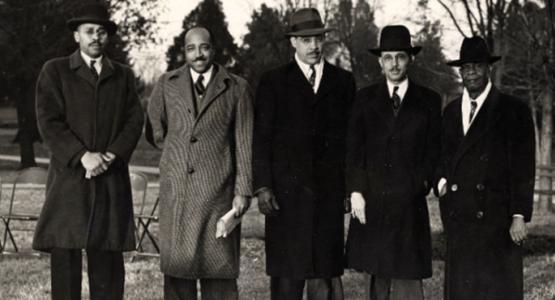
What Happened Next: How Regional Conferences Began
Story by the Visitor Staff
News of Lucy Byard’s death sent shock waves through the Seventh-day Adventist Church, especially among its 16,000 African-American members.
The rejection and her subsequent death was the “last straw” and a “slap in the face” in a “series of denials, negations, cold shoulders and brush-offs that the black membership had experienced for decades,” says Alvin Kibble, vice president of the North American Division (NAD) and a former Allegheny East Conference president.
In a 2018 NAD article titled “Organization Honors Memory of Lucille Byard,” Debbie Michel wrote, “Byard’s death triggered a new level of activism as never before seen. A letter from Byard’s Long Island, N.Y., congregation was sent to the General Conference (GC) president threatening a lawsuit. One group comprised of a number of highly educated and articulate women met in the back room of a Washington, D.C., bookstore and began to organize.
According to an account in Calvin Rock’s 2018 book Protest and Progress, ‘They passed the hat to help on the telephone bill and began calling various persons to apprize them of their actions.’ Before long, the Committee for the Advancement of World-Wide Work Among Colored Seventh-day Adventists, which advocated for equal rights in the church, was formed.”
After many discussions and meetings between black leaders and GC officers, members of the 1944 Spring Meeting of GC Executive Committee voted, “We recommend:
-
That in unions where the colored constituency is considered by the union conference committee to be sufficiently large, and where the financial income and territory warrant, colored conferences be organized.
-
That these colored conferences be administered by colored officers and committees.
-
That in the organization of these conferences the present conference boundaries within each union need not be recognized.
- That colored conferences sustain the same relation to their respective union conferences as do the white conferences (Actions of the Spring Meeting of the General Conference Committee, April 10–16, 1944, pp. 15, 16).
Over the next two-and-a-half years, seven Regional Conferences were established, including the Allegheny Conference in December 1944, which later became the Allegheny East and Allegheny West conferences in the Columbia Union Conference. The Lake Region Conference in the Lake Union Conference was the first to begin functioning on January 1, 1945.
 Read articles from the 2019 Visitor:
Read articles from the 2019 Visitor:
- Feature: The Lucy Byard Story
- Editorial: Lessons from Lucy Byard
- What Happened Next: How Regional Conferences Began
- Aiding and Abiding: 75 Years After Lucy Byard, Regional Conferences Maintain Focus on the Marginalized
- Getting to Know Lucy Byard
- More About the Byard Story
- Book Release: Hope for Today's Families
- Book Release: Simple Truths for Life

Comments
Lucy Byard Story
I am truly indebted to Ms. Byard and those African American leaders of that time who persevered in spite of the obstacles of prejudice and bigotry. Those leaders continued in the SDA faith because of there Ministerial calling and love for Christ.
I thank them for there service.
Regional Conferences
This article is illuminating. I never knew that the Seventh-day Adventist Church decided to implement a "separate but equal" plan for conferences. It seems to have worked similarly to other decisions of that kind from that era.
Wiser Now
Thanks for this article. It reminds me of an overlooked matter that needs to be corrected before Jesus returns. "Hindsight is 20/20." I can't say what I would have done back then, but with the benefit of retrospect, we can make better decisions today. I can think of at least three shortcomings of the April 10–16, 1944 Spring General Conference Committee recommended actions:
1. Organizing unions instead of organizing the work equally in these territories was a mistake. Correct me if I'm wrong. I know racial prejudice was rife and the work then was hampered by attitudes on both sides. But I wonder if there was a way, as a denomination, to set the example for society without exacerbating prejudice? I mean, if they had the wherewithal to financially and numerically thrive as black conferences then why bother with the separation in the first place?
2. And if these colored conferences were to be administered by colored officers and committees, did this prohibit caucasian and others from serving in this territory? Isn't that discrimination? And if others were allowed then why the delineation of regional conference?
3. Wouldn't redistricting be better served with less overlap? Currently these boundaries are wasteful. In my area alone there are three (3) conferences which overlap - Chesapeake, Allegheny East, and Potomac. Isn't this wasteful?
And
4. What was the difference between the fourth recommendation and "separate but equal"? Shouldn't the conferences, if equal, just be conferences and not "colored conferences" and "white conferences."
If we are going to be so blind that we can't see this for what it is, then shouldn't we be color blind as well?
Add new comment